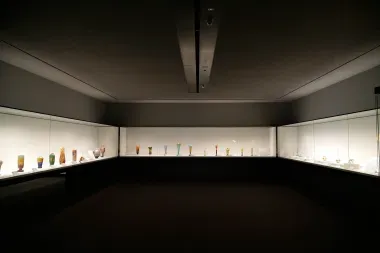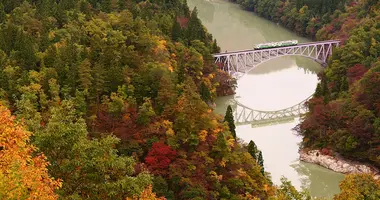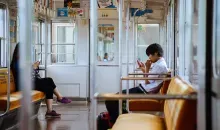How to get from Kyoto to Hakone
Hakone, a common trip for those coming from Kansai, is a great location to enjoy some of the best natural scenery in all of Japan. The two locations are connected via the Tokaido Shinkansen.
Getting to Hakone from Kyoto via Shinkansen bullet train
To get to Hakone from Kyoto, the Shinkansen bullet train can be ridden from Kyoto Station to Mishima Station, Atami Station, or Odawara Station, three of the most prominent stations in the Hakone area. Within Hakone, visitors can utilize the many different forms of public transportation to traverse around the area.
The distance between the two areas is around 374 km (232 miles), and the journey will take around 2 hours. For Japan Rail Pass users, the ride is fully covered for Kodama and Hikari trains; however, for the Nozomi Shinkansen bullet train, there will be an additional charge. Otherwise, individual tickets can be purchased with or without a seat reservation and start at around 11,000 yen.
Different types of Shinkansen bullet trains available on this itinerary:
| Hikari Shinkansen Bullet Train | Kodama Shinkansen Bullet Train |
Reserve tickets from Kyoto to Odawara!
Reserving seats on the Shinkansen
On Shinkansen bullet trains, individual ticket holders and Japan Rail Pass holders can reserve seats in advance of boarding. Reservations are typically not required for Shinkansen bullet trains because they frequently have non-reserved cars with seats available on a first-come, first-served basis. These are often the car numbers 1-4.
On certain trains, reservations are required for every car. However, it is highly recommended that all travelers try to book tickets during the busiest travel seasons in Japan, which are the spring and the New Year's holiday. When buying a single ticket, a reserved seat costs extra, but Japan Rail Pass holders are free of this charge.
Oversized Baggage on the Shinkansen
A variety of requirements must be fulfilled in order for passengers with large suitcases to board the bullet train. According to Japan Railway regulations, luggage over 160 cm in length, width, and height needs to be checked into the special bulky baggage section at the back of the train car. Owners of such bags must additionally make reservations for seats near this section. Please be advised that you cannot board the Shinkansen with luggage that is larger than 250 cm overall.
Baby carriages, musical instruments, and sporting goods (bikes, snowboards, etc.) are exempt from these baggage regulations.
Exploring Kyoto
Kyoto, the capital of ancient Japan, is a vibrant city rich in history that is home to 17 different UNESCO World Heritage Sites. For tourists coming from Tokyo, it is frequently the next destination on the Japan Golden Route itinerary. It is a well-liked tourism destination, located in the culturally diversified Kansai area, which is well-known for its unusual destinations.
Kyoto's most famous features are the temple itself and the climb up to Kyomizudera, both well worth the trip. Venture a bit beyond the typical path; the steep alleys that ascend to the temple are dotted with charming shops and restaurants! Afterwards, the "gold and silver temples," Ginkakuji and Kinkakuji, act as potent reminders of the city's colorful history. A combination of historic temples and even a beloved onsen in Kitaoji, a more laid-back district, add to the area's serene atmosphere.
Kyoto is a big city, but it's not like other Japanese metropolises in that it has a lot more traditional architecture than skyscrapers and is bordered by mountains on three sides. Take advantage of Kyoto's distinctive terrain by taking a leisurely stroll and taking in the scenery. One of the simpler treks in the area is the two-hour walk from Shogunzuka to Seiryuden, which leads to Chion-in Temple. Take in an unimpeded perspective of the city from a higher vantage point and discover Kyoto in a way you never would have imagined.
Travelers leaving Kyoto for Hakone will do so from Kyoto Station, which is located in the center of the historic capital. Kyoto holds the unique distinction of being the first city in the world to celebrate its 1200th anniversary; this was accomplished in 1997 when the station had a redesign by renowned architect Hiroshi Hara. Not many places can match this accomplishment. The area is not as large as Tokyo Station, but it does have a few cafes, restaurants, and convenience stores. Still, one of the most recognizable aspects of Kyoto Station is the illuminated stairway, whose display changes depending on the season. The much-loved Ume-yu, a sento bathhouse in a residential area with a distinct ambiance and eccentric wares, is just a short stroll from the station. It's a great spot to relax and pass the time.
Exploring Hakone
This regional treasure, located in Kanagawa Prefecture, is easily accessible from Tokyo and is home to some of the most breathtaking scenery in the country as well as a center for art and culture. Some of the most stunning views of Mount Fuji can be seen here, and the glittering Lake Ashinoko serves as the venue for a range of fun events and activities.
Going out to Hakone from Kyoto or other parts of Kansai is made easy with the Tokaido Shinkansen train, and for those going to and from Tokyo, the Hakone Free Pass issued by Odakyu is a great way to travel around the region.
The unobstructed views of Mount Fuji are so clear that they almost seem to be projected onto the background, which is sure to impress many visitors to Hakone. One of the best ways to take in the scenery is by bathing in the calming onsen hot springs that are so prevalent in this area as a result of the volcanic activity that occurs nearby.
Lake Ashinoko is Hakone's other main natural feature. On the surface of the water are a number of sightseeing boats, one of which is fashioned after an old western-style pirate ship. Along the Lake Ashinoko coastal path, there are numerous beaches where visitors may relax and have fun. One of the most iconic sights in Hakone is the Torii gate of Hakone Shrine, which opens onto the lake. Try to arrive early in the morning to escape the crowds and enjoy some alone time to take in the shrine grounds!
The good news for art lovers is that Hakone boasts more museums than many other places in Japan. The Hakone Open-Air Museum is popular with both domestic and foreign tourists because, as its name implies, it offers a range of exhibitions and installations in an outdoor setting. The POLA Art Museum is another well-liked location in the Kanto area. Visitors may examine an incredible collection of Monet works there.
It takes around 2 hours to get to the Hakone area from Kyoto, depending on the intended station of arrival. Mishima Station, just a bit southwest of Hakone, is actually located in Shizuoka Prefecture, neighboring Kanagawa Prefecture. This area in particular is famous for the Mishima Skywalk, a suspension bridge with beautiful views of Mount Fuji. Atami Station is also located in Shizuoka Prefecture, and here, unbeatable views of the sea can be witnessed from luxurious onsen hot springs. Then, Odawara, located right by Hakone in Kanagawa Prefecture, is home to a medley of art museums and the historic Odawara Castle, an iconic historical site in the area.
Enjoy the tranquil landscapes of Kanto at Hakone!
Far from just bustling cities and sleepy residential towns, Kanto is home to some of the best Japan has to offer. Hakone serves as a great stop either on the way to or from Tokyo, offering picturesque views unlike anywhere else in the world and great escapes to relax and wind down. There are a number of means of getting to this area from Kyoto, but be sure to book your tickets with a reservation during peak travel times to assure easy travel on the way! Additionally, the Japan Rail Pass will be a great option to have the journey covered as well as being able to traverse throughout the rest of the Japanese archipelago with ease!














